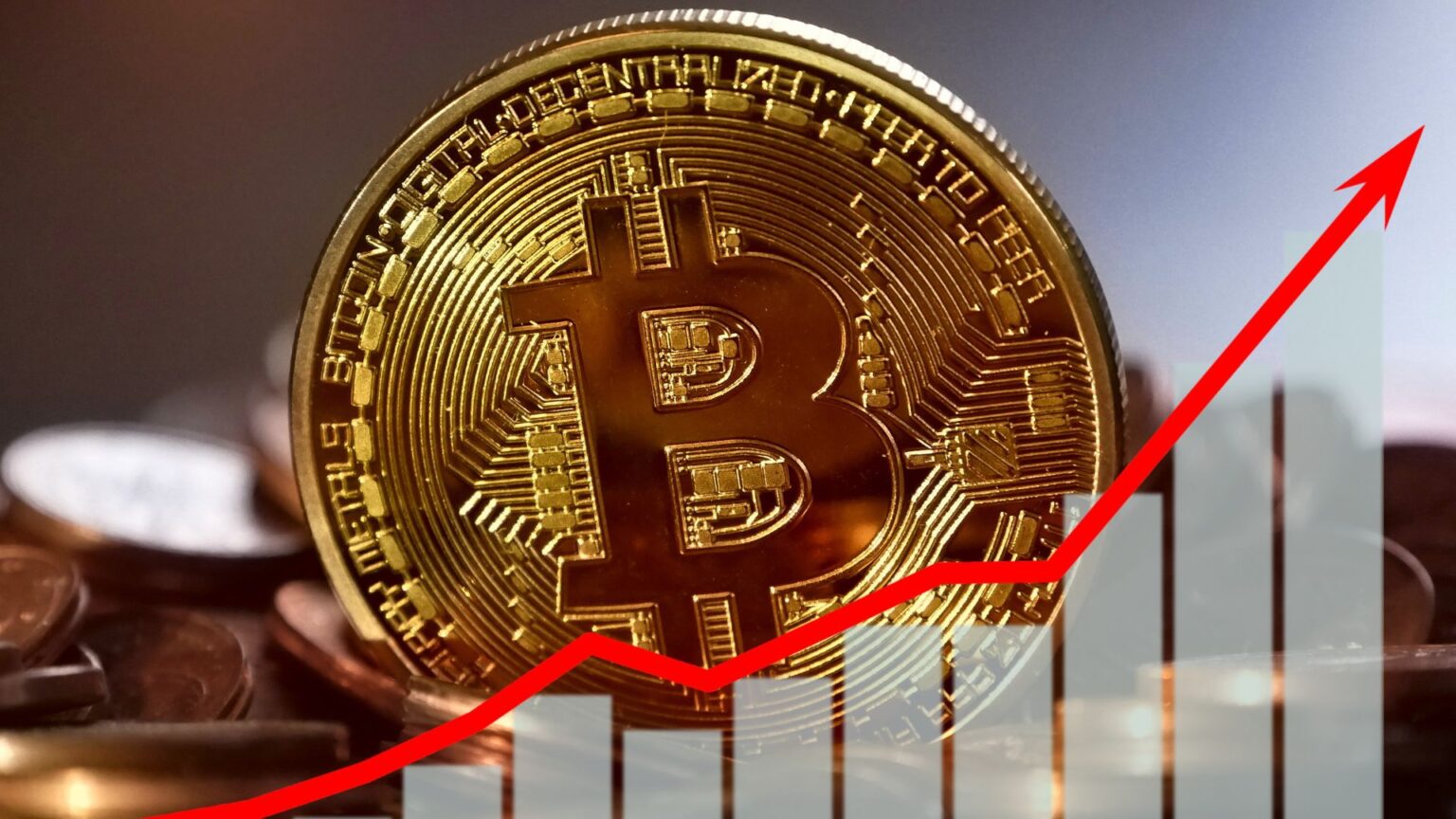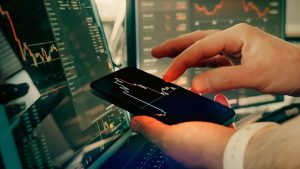The recent simultaneous rally of Bitcoin and the S&P 500 has caught the attention of traders and investors alike, sparking discussions about the increasing correlation between the traditional equity market and the world of cryptocurrencies. While Bitcoin has often been viewed as an uncorrelated asset class, recent price movements have raised questions about how macroeconomic factors and investor sentiment are influencing both markets.
In this blog, we’ll take a closer look at the potential drivers behind the simultaneous surge in Bitcoin and the S&P 500, explore the implications of this correlation for traders, and discuss strategies for navigating these market shifts. We’ll also highlight how EPIQ Trading Floor can help you stay ahead of market trends with real-time signals and expert analysis.
1. Bitcoin and S&P 500 Rally: What’s Driving the Surge?
A. Inflation and Interest Rates
One of the key factors driving both the Bitcoin and S&P 500 rallies is the ongoing debate around inflation and interest rates. As inflation remains a central concern for both the Federal Reserve and global markets, investors are closely watching how central banks manage their monetary policies. Recently, hints of a potential slowdown in rate hikes have spurred optimism, contributing to gains in both Bitcoin and the S&P 500.
With the Federal Reserve suggesting it may take a more measured approach to interest rate hikes, investors are growing more comfortable with riskier assets. As a result, both traditional equity markets and the crypto market are seeing increased buying pressure. Read more about the impact of interest rates on Bitcoin here.
B. Institutional Adoption of Bitcoin
Another factor that has helped fuel Bitcoin’s surge is the growing interest and institutional adoption of digital assets. Major financial institutions, hedge funds, and even corporations are increasingly incorporating Bitcoin into their portfolios as they seek diversification and potential inflation hedges.
The Bitcoin ETF approvals, alongside increasing interest from institutional investors, are giving the asset more legitimacy and encouraging further inflows. This increased demand is pushing prices higher, and when combined with favorable macroeconomic conditions, it’s no surprise that Bitcoin is surging alongside traditional markets.
Key Takeaway: Inflation concerns, central bank policies, and growing institutional adoption are contributing to the rallies in both Bitcoin and the S&P 500, driving more investors to enter both markets.
2. Correlation Between Bitcoin and the S&P 500: What It Means for Traders
Historically, Bitcoin has been viewed as a non-correlated asset, meaning it would often move independently from traditional assets like stocks. However, the recent surge in both Bitcoin and the S&P 500 suggests that this relationship may be evolving. The two assets now seem to share a stronger connection than ever, as both respond to similar macroeconomic drivers such as inflation, monetary policy, and investor risk sentiment.
A. The Shifting Correlation
Recent data shows that the correlation between Bitcoin and the S&P 500 has increased, particularly in times of global uncertainty. As both markets are impacted by the same broader economic forces, such as inflation and interest rates, it’s becoming clear that Bitcoin may no longer be entirely immune to what happens in the stock market. This can provide traders with additional insights when analyzing market movements.
B. Implications for Traders
For traders, the increasing correlation between Bitcoin and the S&P 500 means that it’s important to monitor both markets simultaneously. A shift in one market could now have implications for the other, so understanding these dynamics can help traders anticipate price movements and adjust their strategies accordingly.
This also means that risk management is more important than ever. With both Bitcoin and the S&P 500 reacting to similar macroeconomic factors, a significant shift in one market—such as a sudden downturn in equities—could lead to a broader selloff across multiple asset classes, including Bitcoin.
Key Takeaway: The increasing correlation between Bitcoin and the S&P 500 means traders need to monitor both markets and adjust their strategies to account for shared economic influences.
3. Trading Strategies for a Correlated Market
As Bitcoin and the S&P 500 become more intertwined, traders need to adapt their strategies to capitalize on this relationship. Here are a few strategies that can help you navigate the current market environment:
A. Trend Following
Given the current bullish sentiment in both markets, a trend-following strategy can be effective. Traders can use technical indicators like moving averages and Relative Strength Index (RSI) to confirm the strength of the uptrend and enter trades when both Bitcoin and the S&P 500 are showing strong upward momentum.
B. Diversification
Even with the increasing correlation between Bitcoin and traditional equities, diversification remains a key component of a successful trading strategy. Diversifying across multiple asset classes—including cryptocurrencies, stocks, bonds, and commodities—can help mitigate risk and reduce the impact of market volatility.
C. Monitoring Macroeconomic Data
Given the influence of macroeconomic factors on both markets, it’s crucial for traders to stay informed about upcoming economic reports and central bank announcements. Key indicators like inflation data, GDP growth, and employment figures can provide valuable insights into potential market shifts and help traders make more informed decisions. Learn more about how macroeconomic data impacts crypto.
Key Takeaway: Traders should use trend-following strategies, diversify their portfolios, and monitor macroeconomic data to navigate the current market environment, where Bitcoin and the S&P 500 are increasingly correlated.
4. What’s Next for Bitcoin and the S&P 500?
Looking ahead, traders will need to remain vigilant as both the crypto and equity markets continue to respond to global economic events. While the recent surge in Bitcoin and the S&P 500 is encouraging, risks remain, especially if inflation continues to rise or central banks become more aggressive with interest rate hikes.
A. Potential Market Risks
The recent rallies in both markets could face headwinds if inflationary pressures remain persistent. If central banks are forced to raise interest rates faster than expected, both Bitcoin and the S&P 500 could experience a sharp correction. Additionally, any negative news regarding institutional adoption or regulatory hurdles could affect Bitcoin’s upward momentum.
B. Long-Term Outlook
Despite the potential risks, the long-term outlook for both Bitcoin and the S&P 500 remains promising. With institutional adoption on the rise and the continued development of the crypto ecosystem, Bitcoin is becoming more integrated into the broader financial system. Similarly, the S&P 500 continues to benefit from economic recovery and the growth of tech stocks.
Key Takeaway: While there are potential risks in the short term, the long-term outlook for both Bitcoin and the S&P 500 remains strong, especially as institutional interest in cryptocurrencies continues to grow.
Leverage Market Insights with EPIQ Trading Floor
In today’s fast-moving markets, staying informed and adapting your strategies is crucial for success. With EPIQ Trading Floor, you can access real-time signals, expert analysis, and a community of traders to help you make better trading decisions.
EPIQ Trading Floor provides:
- Real-time market alerts to keep you updated on Bitcoin, the S&P 500, and other key assets.
- In-depth analysis of macroeconomic trends and their impact on the crypto and equity markets.
- A community of traders who share insights and strategies to help you succeed.
Start your 3-day free trial today! Join EPIQ Trading Floor to gain access to exclusive trading tools, expert analysis, and a supportive community that will help you navigate the evolving markets.
Disclaimer
The information provided in this blog is for educational purposes only and does not constitute financial advice. Always conduct your own research before making any investment decisions.










Responses